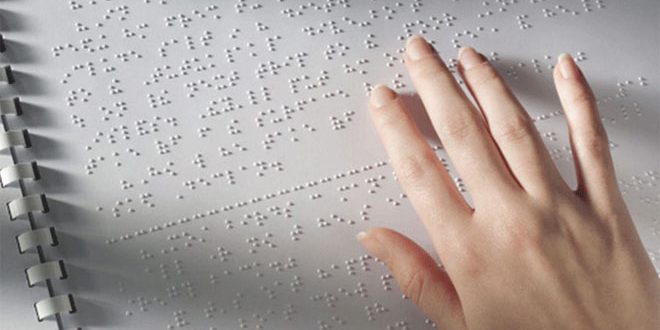World Braille Day is a reminder aimed at encouraging blind and visually impaired people to read and write, enhancing their opportunities to learn and work and activating their integration into their communities, as well as raising awareness of the importance of learning to write in Braille.
Braille, which celebrated World Day for the first time in 2019, is a display of alphanumeric symbols using 6 touch-sensitive points to represent each letter and number, including music, mathematics and science symbols, and is used to read books and periodicals printed in visual font, ensuring blind people have access to important information.
In Syria, blind and visually impaired persons are taught in special institutes under the supervision of the Ministry of Labor and Social Affairs, including the Institute of Special Education for the Rehabilitation of the Blind in Damascus, which according to the director of the institute, Nada Abu Al-Shamat, printed textbooks in Braille and provided the curriculum for students after adaptation, explaining images, maps and charts and translating them into the Braille method to provide the same level and quality of education as the sighted student.
In a statement to SANA, Abu Al-Shamat explained that the institute in cooperation with “Light” Initiative printed the school curriculum in WordPress form, noting that the success rate of students in the general secondary certificate exams, literary branch, was 100% last year.
“More than 160 students aged between 6 – 18 years are currently studying at the Institute and are educated according to the Ministry of Education curriculum, which is printed in Braille, “Abu Al-Shamat added.
Head of the Board of Directors of the Syrian Harmony Association for Blind Women, Maysa Al-Sakka, explained that Braille learning offers added value to blind people, opens a broad horizon for reading and learning on the one hand, and pursuing their studies at various levels of education on the other.
She pointed out that the Society offers Braille writing courses, as well as English language and Computer Driving courses, indicating that the number of blind women benefiting from the Society’s services is about 550, aged over 18.
“The University of Damascus has a special room for the printing of lectures in Braille in accordance with the desires and needs of blind students, thereby facilitating their studies.” Al-Sakka added.
She indicated that the International Braille Day is an opportunity to support this group of people with disabilities and encourage them to learn this writing, noting the importance of providing various types of books in Braille to meet the passion of blind to reading and learning, especially that, despite their high costs, modern technologies have contributed to the development of Braille writing from typewriter to mobile and computer.
It is worth mentioning that the United Nations chose 4 January each year as World Braille Day, because this date marks the birth of Louis Braille, in 1809.
Amal Farhat

